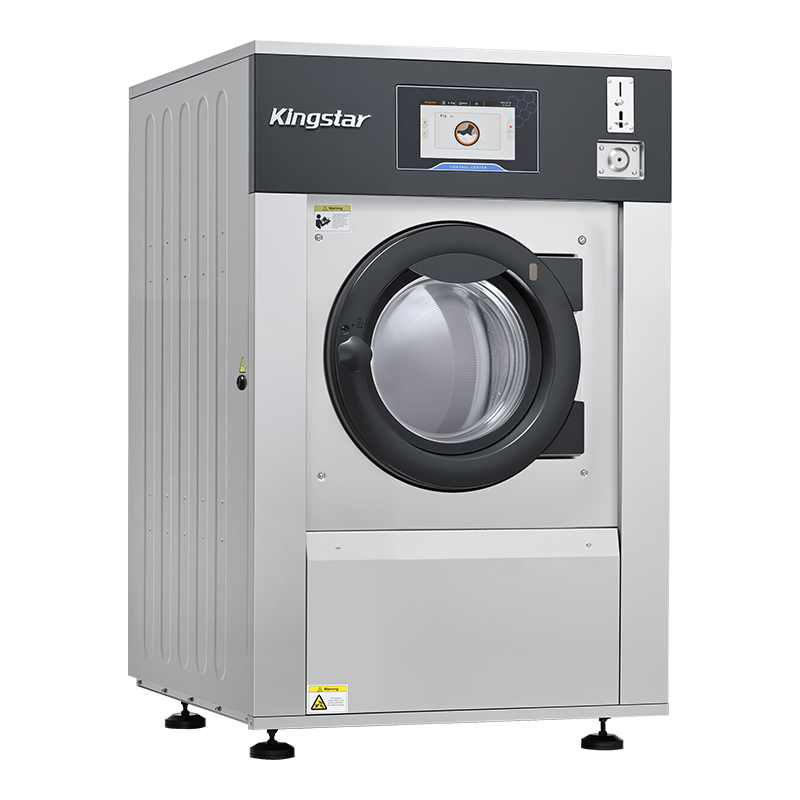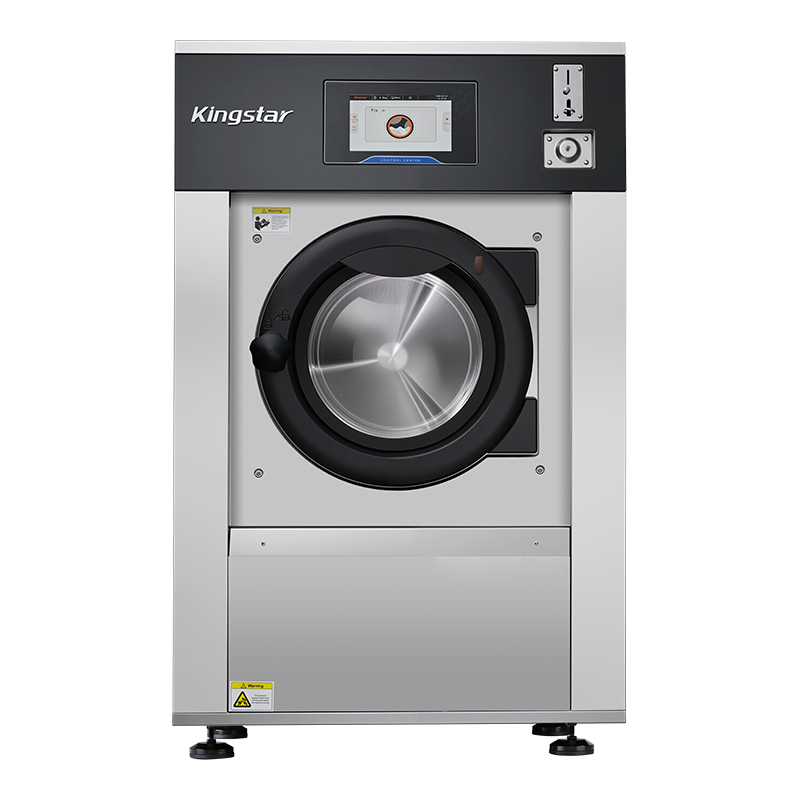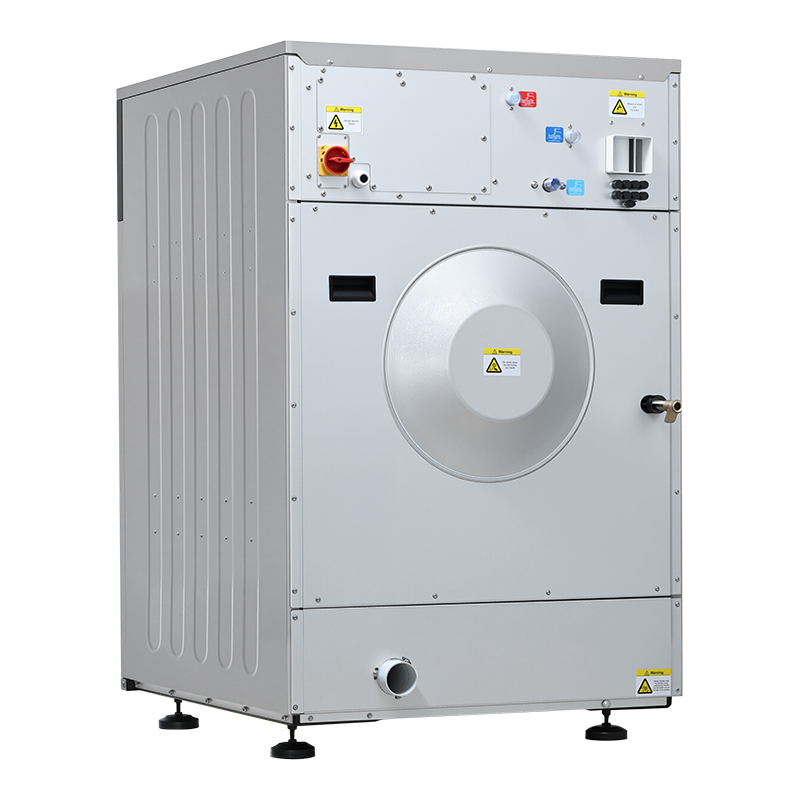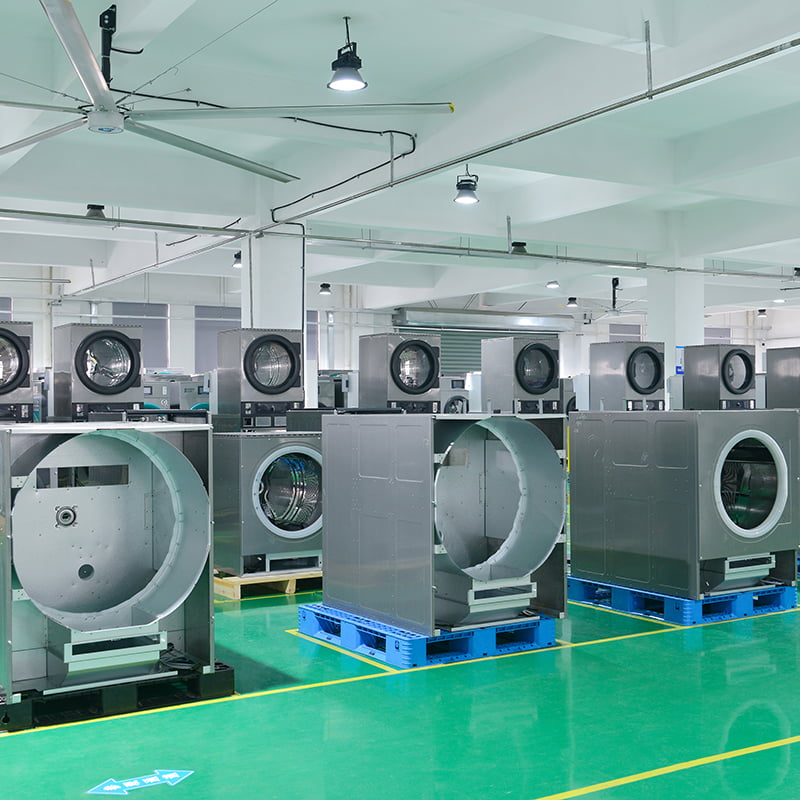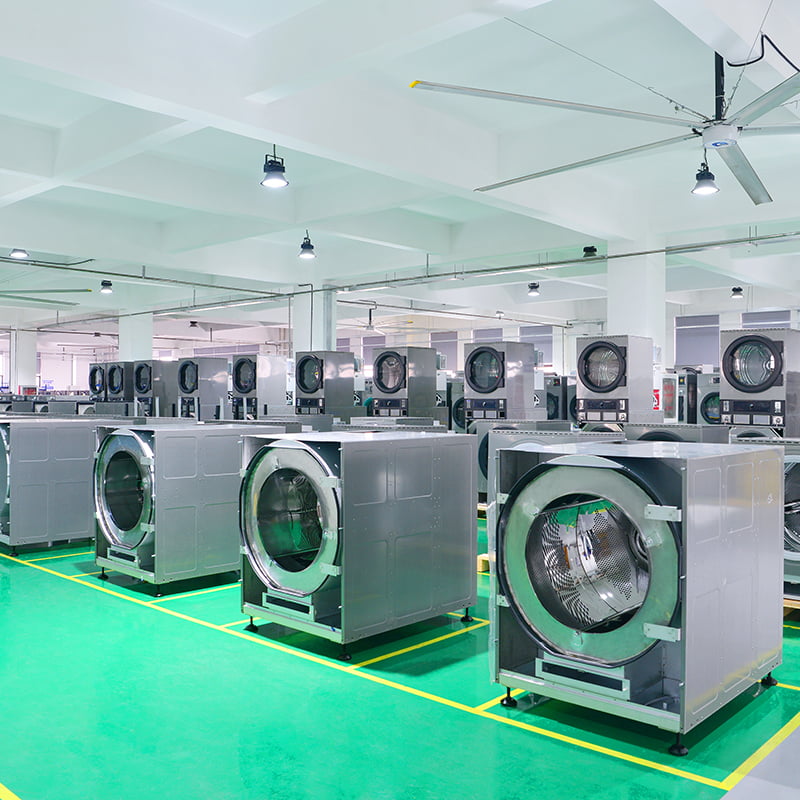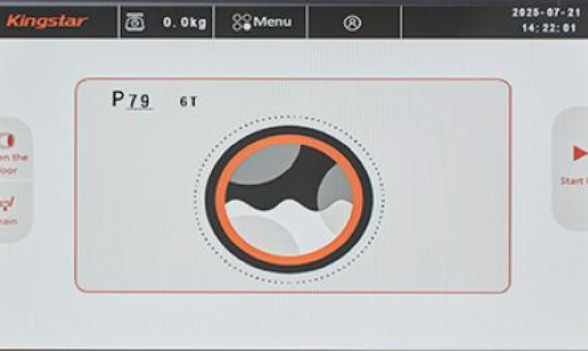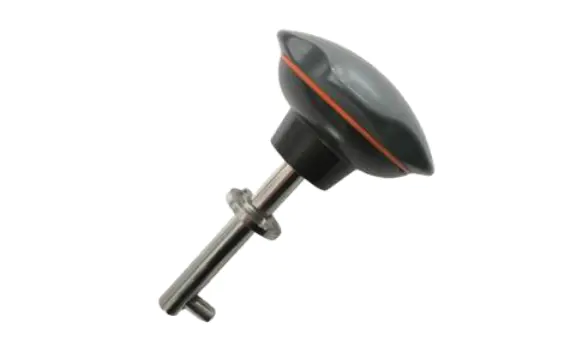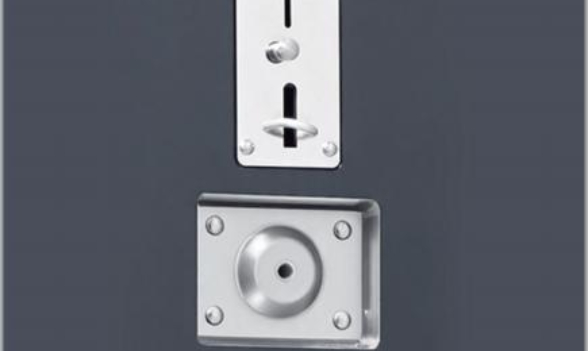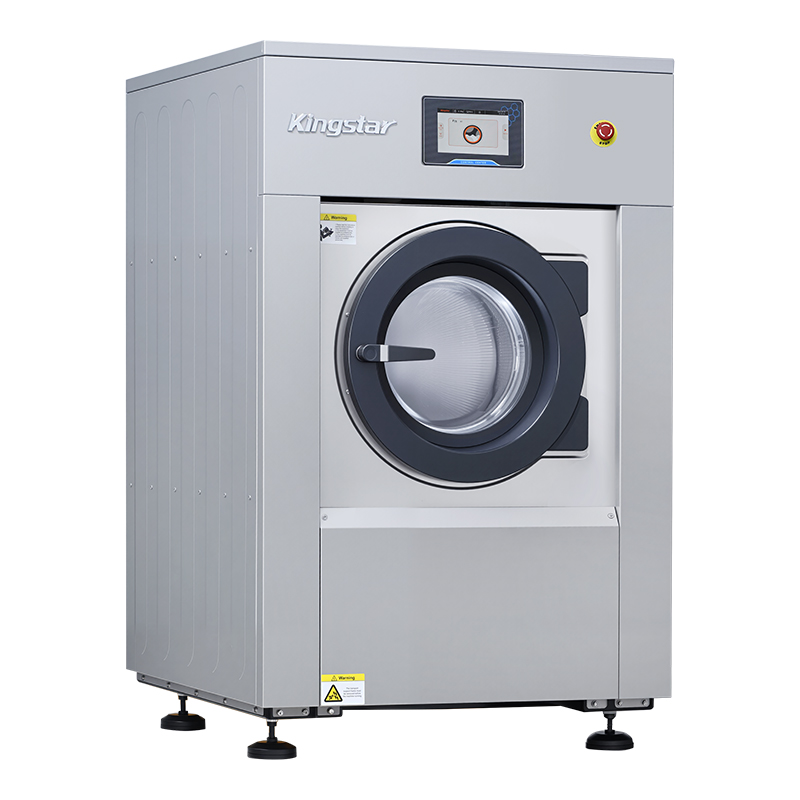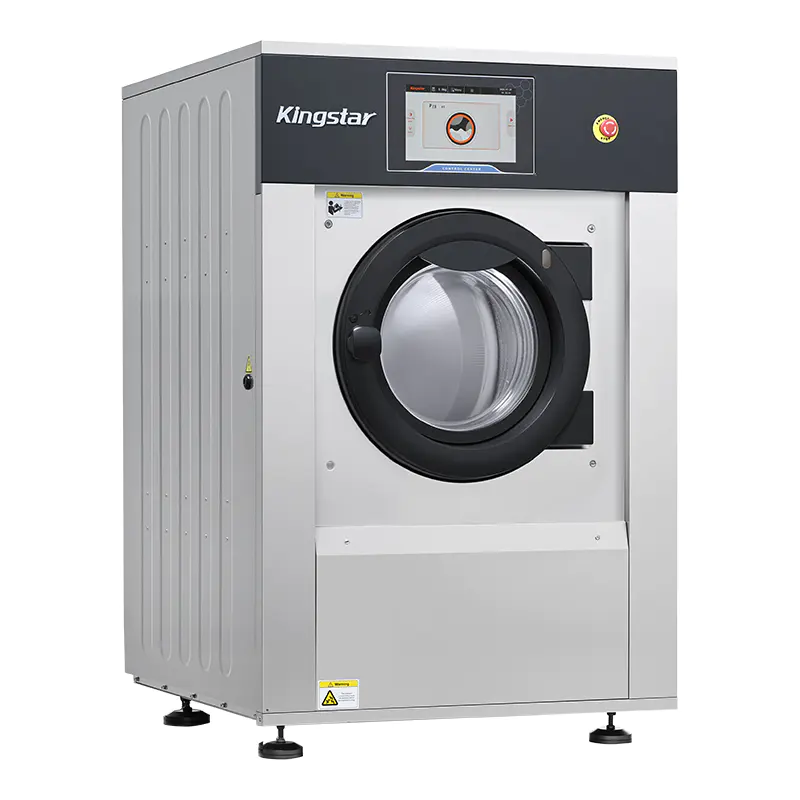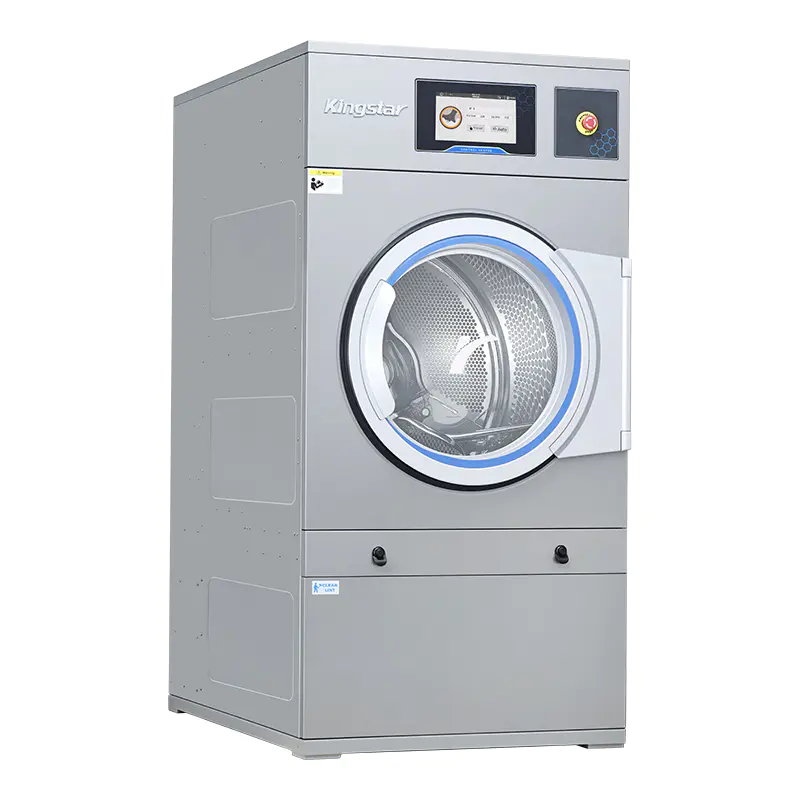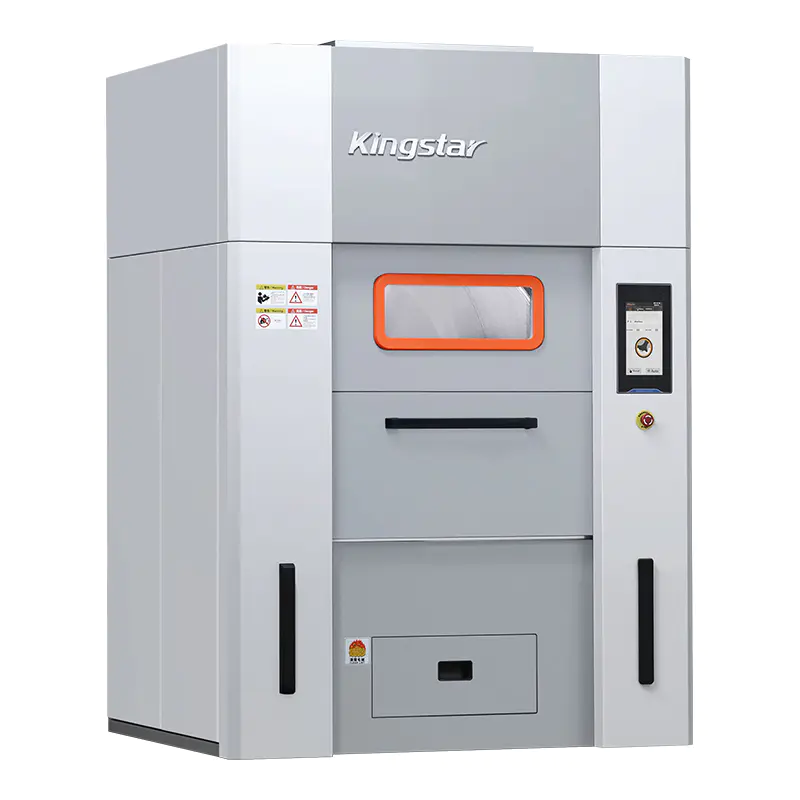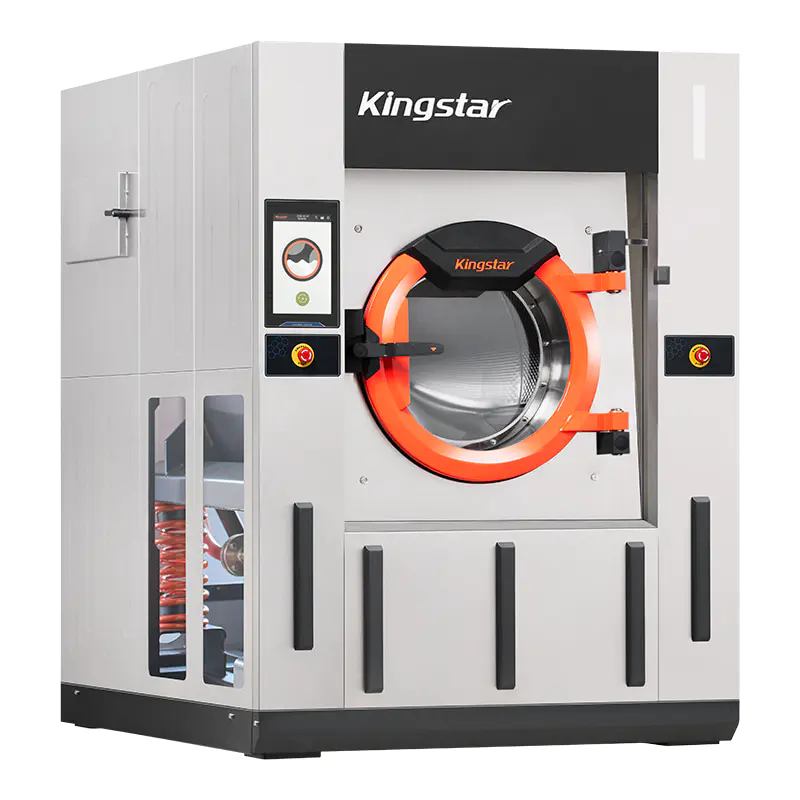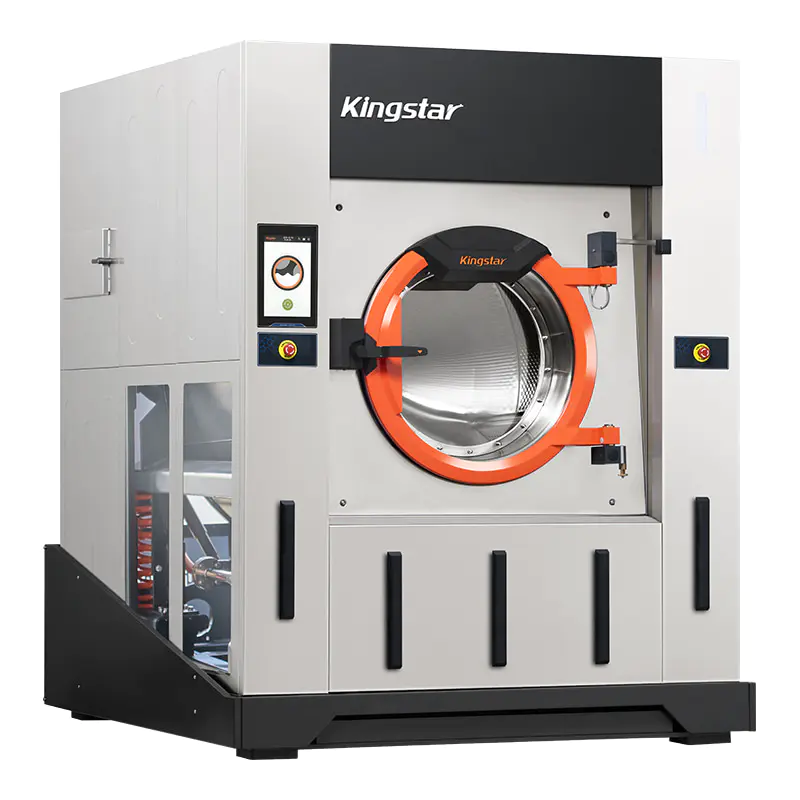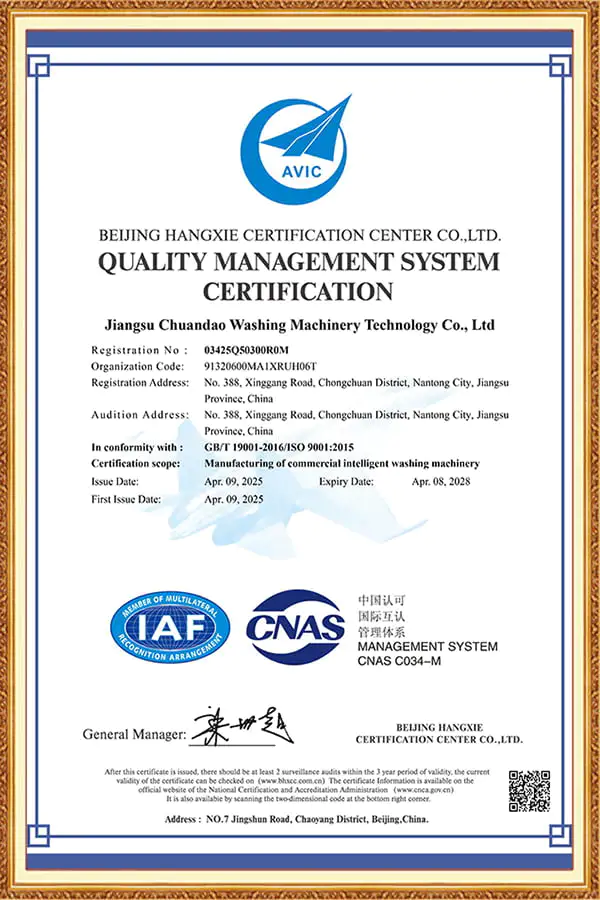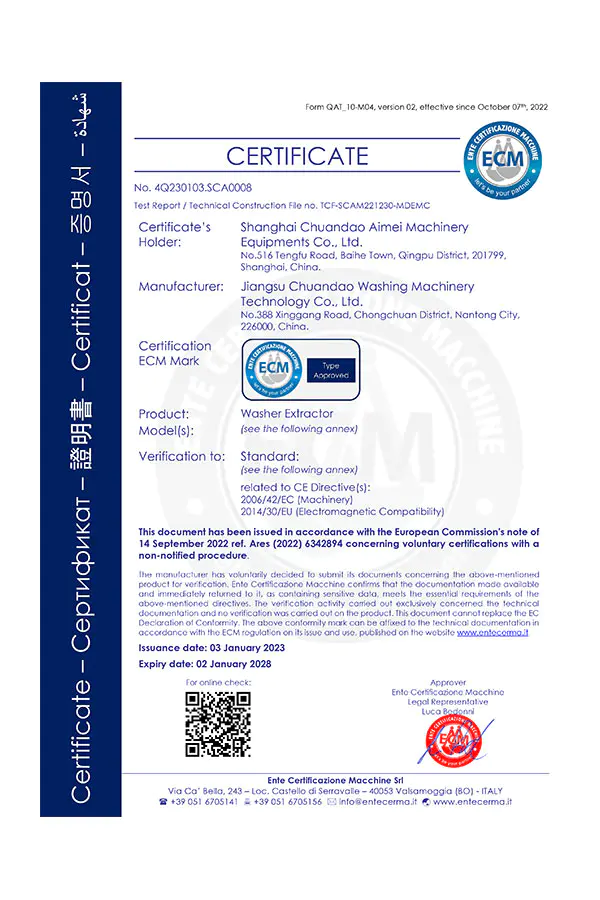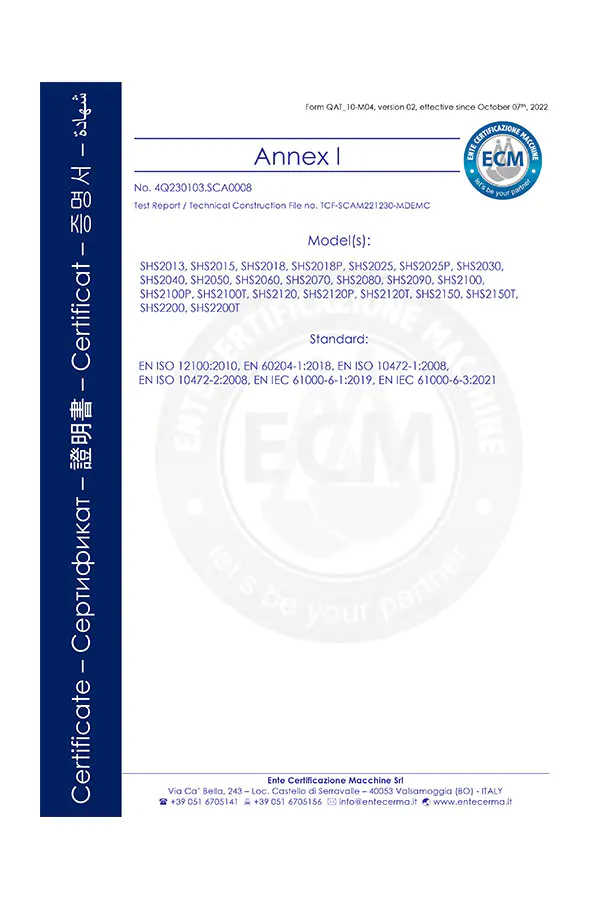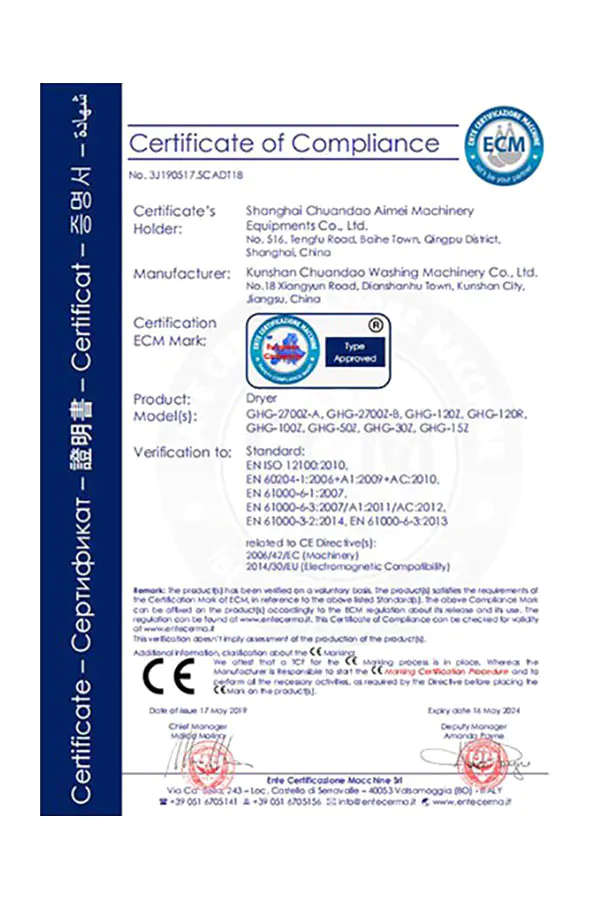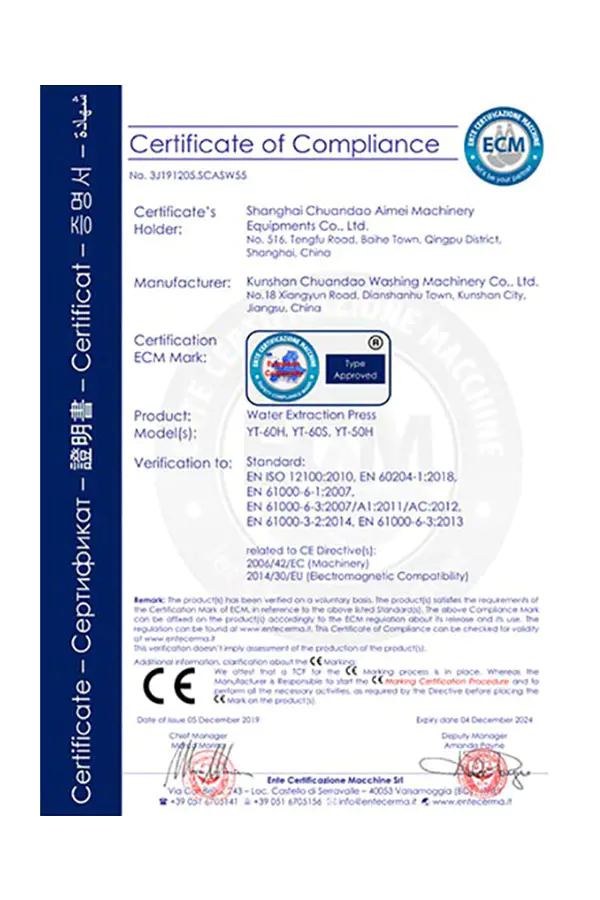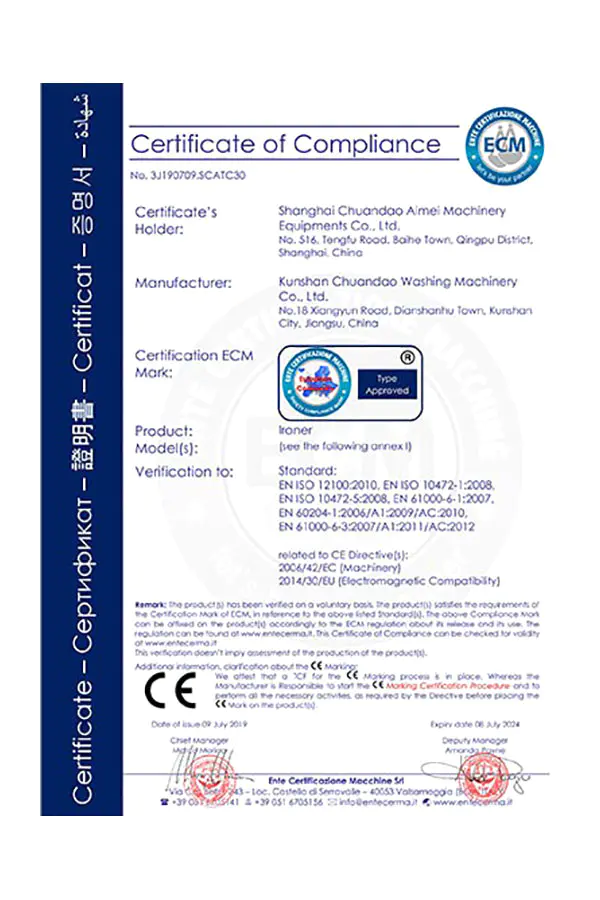Coin-Operated Softmount Washer(12/15/20/25kg)
Kingstar’s line of coin-operated commercial washers is built to deliver outstanding efficiency, robust durability, and simple operation. Designed with flexible options, these machines suit the needs of laundromats, residential complexes, and hotel facilities, providing consistent performance with minimal maintenance requirements. Get in touch with us to find the ideal laundry solution for your business.
-

Laundry
-

Dry cleaner
-

Self-service
laundry
- 12kg
- 15kg
- 20kg
- 25kg
(86)+86-13917089379
-

① Suspension Spring and Shock Absorption Structure Design
Designed for ultra-low vibration, the machine is equipped with premium dampers from a well-known German brand. It operates stably on any type of flooring without the need for a separate foundation. -

② 304 Stainless Steel Construction
The inner drum, outer cylinder, and all water-contacting compo- nents are made of 304 stainless steel, ensuring rust-free performance, consistent washing quality, and enhanced operational safety. -

③ 7-Inch HD Full LCD Screen
Supports custom programming and one-touch operation, offering a user-friendly and intuitive washing experience. -

④ Multiple Payment Methods
Offering convenience to users and enhanced operational flexibility for laundry service providers, while helping reduce overhead costs. -

⑤ Electronic Door Lock Design
The electronic door lock is controlled by a built-in computer program, ensuring that the door can only be opened after the high-speed extraction cycle has completely stopped. This design prevents accidental operation and effectively ensures operator safety. -

⑥ Intelligent Weighing Design
The intelligent weighing system automatically adjusts the water volume based on the weight of each load. This not only ensures stable washing performance,but also significantly reduces energy and deter-gent consumption, helping to lower overall operating costs. -

⑦ Optional Automatic Dosing System
Open signalinterface for any brand of dispenser, allowing precise chemical dosing, reducing waste, savinglabor, and ensuring more stable washing quality. -

⑧ High-Speed Extraction
Designed with a 300G extraction rate, the main motor is custom-made by a listed company, providing excellent performance, high extraction rate,and reduced drying time, effectively saving energy. -

⑨ Imported Electrical Components
All electrical components are sourced from renowned interna-tional brands, including TWB bearings from the USA, Schneider contactors from France, and fully imported wiring and plugs. -

⑩ Safe And Reliable
Built with high-strength components to ensure up to 10 years of operation without maintenance. The machine is engineered for a service life of around 20 years and comes with a full 2-year warranty. This design offers long-term reliability and safeguards the investment of laundry business owners.
-
 Simple operation
Simple operation -
 Intelligentize
Intelligentize -
 Humanized design
Humanized design -
 High quality
High quality
|
Specification Model |
SHS-2012C |
SHS-2015C |
SHS-2020C |
SHS-2025C |
|
Operating Voltage(V/P/Hz) |
380/3/50 |
380/3/50 |
380/3/50 |
380/3/50 |
|
Washing Capacity(kg) |
5~12 |
5~15 |
8~20 |
8~25 |
|
Drum Volume(L) |
120 |
150 |
200 |
250 |
|
Washing/Spinning Speed(rpm) |
30~850 |
30~850 |
30~850 |
30~850 |
|
Transmission Power(kw) |
1.5 |
1.5 |
2.2 |
3 |
|
Electrical Heating Power(kw) |
12 |
12 |
18 |
18 |
|
Heating Method |
Electric |
Electric |
Electric |
Electric |
|
Noise(db) |
≤70 |
≤70 |
≤70 |
≤70 |
|
Dehydration Factor(G) |
300 |
300 |
300 |
300 |
|
Automatic Dosing Ports (ways) |
9 |
9 |
9 |
9 |
|
Inlet Water Pressure(Mpa) |
0.2~0.4 |
0.2~0.4 |
0.2~0.4 |
0.2~0.4 |
|
Inlet Pipe Diameter(mm) |
DN20 |
DN20 |
DN20 |
DN20 |
|
Hot Water Pipe Diameter(mm) |
DN20 |
DN20 |
DN20 |
DN20 |
|
Drain Pipe Diameter(mm) |
Φ76 |
Φ65 |
Φ76 |
Φ76 |
|
Inner Drum Diameter ×Depth(mm) |
Φ650×372 |
Φ650×465 |
Φ750×455 |
Φ750×566 |
|
Overall Dimension (mm) |
890×885×1480 |
890×1077×1480 |
980×1050×1570 |
980×1160×1570 |
|
Total Weight(kg) |
400 |
420 |
480 |
500 |
About us
Craftsman spirit, excellence, quality products are the bridge to the world!
Jiangsu Chuandao Washing Machinery Technology Co., Ltd. is a professional China Coin-Operated Softmount Washer(12/15/20/25kg) Suppliers and Coin-Operated Softmount Washer(12/15/20/25kg) Manufacturers. Shanghai Chuandao was established in March 2001, Kunshan Chuandao was established in May 2010, and Jiangsu Chuandao was established in February 2019. Now the total area of Chuandao enterprise is 130,000 square meters and the total construction area is 100,000 square meters. After nearly 20 years of development, CLM has grown into a leading enterprise in China's laundry industry.
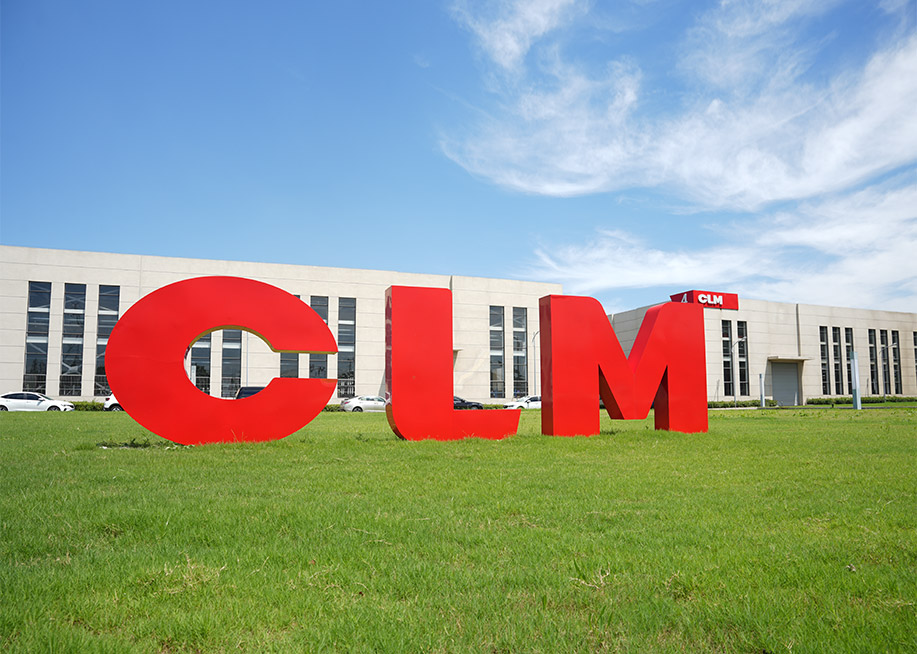
Honor & Qualification
Choose comes from trust, and cooperation
comes from honesty.
NEWS
What is a coin-operated softmount washer?
Definition of a Coin-Operated Softmount Washer
A coin-operated softmount washer is a type of commercial washing machine commonly used in laundromats, hotels, apartment complexes, and other shared laundry facilities. The term "softmount" refers to the washer's suspension system, which absorbs vibration and allows the machine to be installed without reinforced foundations. Unlike hardmount washers that require bolting to the floor, softmount models offer greater installation flexibility. The coin-operated function enables customers to pay directly using coins or, in more modern models, card systems. This design allows businesses to provide self-service laundry operations while maintaining efficiency and reliability in high-usage environments.
Core Characteristics of Softmount Washers
Softmount washers are designed with a suspension system that reduces vibration during high-speed extraction cycles. This feature makes them suitable for locations where the floor structure may not support the heavy vibrations produced by hardmount washers. They are also known for faster spin speeds compared to many traditional top-load washers, which leads to reduced drying time. In coin-operated formats, these machines combine industrial durability with customer-friendly interfaces, ensuring they can withstand frequent use while remaining easy to operate. The combination of durability, flexibility, and self-service functionality makes them a standard choice in many commercial laundry settings.
How Coin-Operated Systems Work
The coin-operated mechanism in these washers typically includes a coin slot or card reader connected to the machine’s control system. Customers insert the required payment before the machine unlocks its wash cycle options. Once payment is received, the user can select the desired wash program, and the cycle begins. Modern versions often replace coin slots with smart payment systems, such as laundry cards, mobile apps, or RFID chips. This reduces issues related to coin jams and provides operators with better tracking of usage and revenue. Regardless of the payment method, the coin-operated feature makes the washer practical for self-service business models.
Installation Flexibility
One of the major advantages of a softmount washer is its installation flexibility. Because the washer does not need to be bolted to a reinforced concrete base, it can be placed on standard flooring, including wooden or upper-level structures. This makes it possible to install such machines in multi-story buildings, retail facilities, and apartment complexes without extensive construction. For coin-operated laundry facilities, this means reduced installation costs and quicker setup. Softmount washers are often chosen in scenarios where space is limited, or structural modifications are not feasible.
Typical Water and Energy Consumption
Coin-operated softmount washers are generally designed to balance effective cleaning with efficient resource usage. They use less water compared to traditional top-loading machines and rely on advanced drum designs to enhance mechanical action. Energy consumption is also influenced by their high-speed extraction, which reduces drying requirements. The following table provides a comparison of typical water and energy consumption across different washer types.
| Washer Type | Water Consumption (liters per cycle) | Energy Consumption (kWh per cycle) |
|---|---|---|
| Traditional Top-Load Washer | 120 - 160 | 2.0 - 3.0 |
| Coin-Operated Softmount Washer (Front Load) | 60 - 90 | 1.0 - 1.8 |
| Hardmount Industrial Washer | 70 - 100 | 1.5 - 2.5 |
Durability and Maintenance
These washers are designed for high-frequency use, with durable components such as stainless steel drums, reinforced suspension systems, and robust electronic controls. Maintenance is simplified through user-friendly access panels and self-diagnostic software in many modern models. Coin-operated versions also have secure locking mechanisms for coin boxes or card systems, ensuring reliable revenue collection. Routine maintenance typically includes cleaning lint filters, inspecting suspension systems, and ensuring that payment mechanisms remain free from jams or malfunctions. This combination of durability and manageable upkeep makes them a practical investment for businesses.
Benefits for Operators
From a business perspective, coin-operated softmount washers provide several operational benefits. They generate consistent revenue from self-service usage, reduce the need for staff intervention, and attract customers who require convenient laundry services. The high extraction speeds reduce drying times, which translates to lower energy costs in drying equipment. Installation on standard floors reduces facility preparation expenses. Additionally, modern models equipped with remote monitoring allow operators to track usage data, income, and maintenance needs in real time, optimizing business operations and improving profitability.
Benefits for Users
For end users, these washers offer straightforward operation and efficient washing. Customers benefit from reduced wash times and better fabric care due to advanced wash cycle programming. The convenience of coin or card payment systems means users can quickly complete transactions without needing assistance. Softmount washers also tend to provide quieter operation compared to hardmount models, making the laundry experience more comfortable in residential or mixed-use buildings. The overall ease of use ensures customer satisfaction in shared laundry environments.
Applications in Different Settings
Coin-operated softmount washers are widely used across multiple industries and facilities. Laundromats rely on them as their core business machines, while hotels and hostels provide them for guest use. Apartment complexes often install them in shared laundry rooms to provide tenants with accessible and reliable laundry options. Military bases, student housing, and healthcare facilities also employ these machines due to their durability and ease of operation. Their versatility ensures they meet the needs of both business operators and end users across different environments.
Cost and Investment Considerations
The cost of purchasing and installing a coin-operated softmount washer depends on its capacity, features, and payment system. Small-capacity models designed for residential or light commercial use are more affordable, while large-capacity units for laundromats or industrial use require a higher initial investment. However, operating costs are often lower due to reduced water and energy consumption. Over time, revenue generated through coin or card payments offsets initial costs, making these washers a viable long-term investment. Facilities often calculate payback periods based on usage levels and pricing models to determine profitability.
Technological Enhancements
Modern coin-operated softmount washers incorporate several technological advancements. Touchscreen control panels make operation intuitive, while programmable wash cycles offer flexibility for different fabric types and soil levels. Many models support smart payment systems, including mobile apps, NFC payments, and prepaid laundry cards. Connectivity features allow operators to track machine usage and maintenance needs remotely, ensuring uptime and improving customer service. Advances in motor technology and suspension systems further enhance efficiency, vibration reduction, and long-term durability.
Comparison with Hardmount Washers
While both hardmount and softmount washers serve similar purposes, their differences make them suitable for different applications. Hardmount washers require reinforced floors and bolting, which limits installation flexibility but offers stability for extremely high extraction speeds. Softmount washers, on the other hand, offer easier installation and adaptability to different building types. Coin-operated versions of softmount washers are particularly advantageous in locations where reinforced foundations are not possible. The table below outlines key differences between the two washer types.
| Feature | Softmount Washer | Hardmount Washer |
|---|---|---|
| Installation | Can be installed on standard floors | Requires reinforced foundation |
| Vibration Control | Suspension system absorbs vibration | Bolted to floor for stability |
| Typical Applications | Laundromats, apartments, hotels | Industrial laundries, ground-level facilities |
| Flexibility | High, suitable for multi-story buildings | Limited, requires structural preparation |
Future Outlook
The future of coin-operated softmount washers is expected to evolve with the integration of smart technologies, energy efficiency improvements, and advanced customer interfaces. As consumer demand shifts toward digital payment systems, the reliance on physical coins is gradually decreasing. Manufacturers are focusing on eco-friendly designs with lower water and energy usage to align with sustainability initiatives. Connectivity and data analytics will likely play a larger role, enabling predictive maintenance and usage optimization. This evolution ensures that coin-operated softmount washers will remain a cornerstone of commercial laundry services for years to come.
What are the main advantages of a coin-operated softmount washer?
Ease of Installation
One of the main advantages of a coin-operated softmount washer is the ease of installation. Unlike hardmount models, which require reinforced concrete foundations and permanent bolting to the floor, softmount washers are equipped with suspension systems that absorb vibration. This allows them to be placed on standard flooring, including upper levels or wooden structures. For laundromats, hotels, or apartment complexes, this feature reduces both the initial construction costs and the time required to set up a laundry facility. Flexibility in installation also makes it possible to relocate machines more easily if business needs change, giving operators greater long-term adaptability.
Reduced Vibration and Noise
Softmount washers incorporate advanced suspension systems designed to minimize vibration and noise during wash and spin cycles. This is particularly valuable in multi-story buildings, residential complexes, and facilities where quiet operation is important. The reduced vibration not only protects building structures but also extends the lifespan of the machine itself by lowering mechanical stress. For end users, quieter operation translates to a more comfortable laundry experience, while operators benefit from fewer building maintenance concerns related to excessive machine vibration.
Energy and Water Efficiency
Modern coin-operated softmount washers are built to optimize resource use. They consume significantly less water than traditional top-loading machines, thanks to efficient drum designs and front-loading configurations. High extraction speeds remove more water from fabrics during the spin cycle, which reduces the energy required for drying. This contributes to lower utility costs over time and aligns with sustainability goals. For operators, the efficiency of these machines results in reduced operating expenses, making them a financially practical choice for long-term investment.
Revenue Generation and Business Model
Coin-operated softmount washers provide a reliable revenue stream for laundromats, apartment buildings, student housing, and hotels. By integrating a payment system, whether coin slots, card readers, or digital wallets, these washers allow customers to pay directly for each use. This self-service model reduces the need for dedicated staff, which lowers labor costs for operators. The ability to adjust pricing according to cycle type or time of day also provides flexibility in managing income. In addition, secure payment boxes and digital monitoring systems ensure that revenue collection is safe and easy to track.
User Convenience
From the customer perspective, coin-operated softmount washers are simple to operate. The payment interface is straightforward, and most machines feature clear cycle selection options. Faster wash cycles and efficient spin speeds reduce the total time users spend on laundry. Modern models may also include digital displays, touchscreen controls, and support for contactless payments, which further improve user convenience. The combination of ease of use and efficiency enhances customer satisfaction, encouraging repeat visits in laundromat settings.
Durability and Reliability
Coin-operated softmount washers are engineered for frequent use, with heavy-duty components that can withstand the demands of commercial laundry environments. The stainless steel drum and robust suspension system ensure consistent performance even under continuous operation. Many machines are equipped with self-diagnostic features that simplify troubleshooting and reduce downtime. Because of their construction, these washers often have longer service lives compared to household machines, making them a dependable investment for businesses.
Lower Maintenance Requirements
Maintenance for softmount washers is generally simpler compared to hardmount systems. The absence of floor bolting reduces the stress on machine components, and the suspension system minimizes wear from vibration. Routine maintenance usually involves inspecting hoses, cleaning filters, and checking coin or card payment systems for jams. Many modern models come with accessible service panels and diagnostic tools that allow technicians to quickly identify and resolve issues. Reduced downtime ensures higher machine availability, which directly benefits business operators by maintaining consistent revenue streams.
Flexibility of Payment Options
While originally designed for coin operation, many softmount washers now support a variety of payment methods. Card-based systems, prepaid laundry cards, mobile apps, and contactless payments are increasingly common. This flexibility accommodates customer preferences and reduces issues associated with coin handling. For operators, digital payment systems provide accurate data on usage and revenue, helping with business analysis and planning. Offering multiple payment methods also makes the service more accessible to a wider range of users, enhancing overall convenience.
Improved Fabric Care
The design of softmount washers provides better fabric care compared to many traditional top-load machines. Gentle drum rotation, optimized water levels, and programmable cycles help protect delicate fabrics while still ensuring effective cleaning. High-speed extraction removes excess water without excessively agitating the fabric, which reduces wear and tear on clothing. This advantage is important for laundromats and facilities where customers expect their garments to last longer, making the machines more attractive for repeated use.
Space-Saving Design
Softmount washers are often available in compact or stackable designs that help save valuable floor space. In coin-operated environments where maximizing the number of machines is critical, stackable configurations allow operators to double capacity without doubling floor area. This makes them especially suitable for small laundromats, apartment complexes, and dormitories. The ability to fit more machines in limited space enhances customer throughput and increases overall revenue potential for operators.
Comparison with Hardmount and Household Washers
Coin-operated softmount washers offer distinct advantages compared to hardmount industrial washers and household models. While hardmount washers provide stability for heavy-duty cycles, they require reinforced flooring and involve higher installation costs. Household washers, although affordable, are not built for the frequent and demanding use of a commercial environment. Softmount washers balance durability, flexibility, and efficiency, making them an ideal choice for shared laundry facilities. The following table summarizes key differences between these washer types.
| Feature | Softmount Washer | Hardmount Washer | Household Washer |
|---|---|---|---|
| Installation | Standard floors, no bolting | Requires reinforced foundation | Standard residential floors |
| Durability | High, designed for commercial use | High, for heavy-duty environments | Moderate, not for continuous use |
| Payment Options | Coin, card, digital | Usually not coin-operated | Not coin-operated |
| Vibration Control | Suspension system | Bolted to floor | Basic residential design |
| Water and Energy Efficiency | Efficient, reduced consumption | Moderate efficiency | Variable, generally less efficient |
Return on Investment
Investing in coin-operated softmount washers provides a practical return through consistent revenue and lower operational costs. The reduced water and energy consumption translates to ongoing savings, while the durability of the machines minimizes replacement expenses. Business owners can calculate payback periods based on machine usage, cycle pricing, and customer demand. Because these washers can be installed with minimal construction requirements, upfront costs are lower than with hardmount alternatives, improving the financial viability of the investment.
Technological Advancements
Many modern coin-operated softmount washers include advanced technology features. Programmable control systems allow operators to customize wash cycles based on fabric type and soil levels. Remote monitoring capabilities give operators real-time data on machine usage, payment collection, and maintenance requirements. Additionally, energy-efficient motors and inverter-driven systems enhance performance while reducing operating costs. These technological improvements contribute to both operational convenience and long-term sustainability for businesses that rely on commercial laundry equipment.
Suitability Across Applications
Coin-operated softmount washers are versatile enough to serve in multiple environments. Laundromats benefit from their durability and revenue generation. Hotels and hostels use them to provide convenient laundry services to guests. Apartment buildings and student dormitories often include them in shared laundry rooms. Military bases, healthcare facilities, and correctional institutions also rely on their reliability and efficiency. Their adaptability across industries underscores their role as essential equipment for shared and commercial laundry operations.

 English
English русский
русский Español
Español